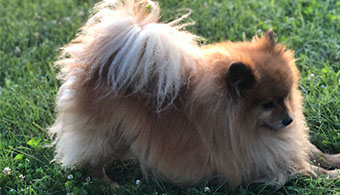FAQ
Logistical FAQ
Where are you located?
Physical address is: 19302 Silcott Springs Road, Purcellville, VA 20132. One word of caution, if using Map Quest or another directions app and you are coming from east of Leesburg. One of the suggested routes is to use Route 704; but this takes you over some dirt roads that can be rough. My advice would be to take the Route 7 West option instead.
What are your hours?
Tuesday 8:30 AM – 5:00 PM
Wednesday 8:30 AM – 8:00 PM
Thursday 8:30 AM – 5:00 PM
Friday 8:30 AM – 5:00 PM
Saturday Appointments Upon Request
Sunday Closed
How do I make an appointment?
After hours you can leave a message on our answering machine and we will get back to you the following business day.
If you are an existing client and have signed into your Client Portal, you can now schedule an appointment online!
What types of pets do you see at Tally Oaks?
Do you make house calls?
What if my pet has an emergency?
During regular business hours, please call our clinic at (540) 338-7081. to allow us to make preparations for your arrival.
After hours emergencies can be handled by the following 24/7 emergency facilities:
Valley Vet Emergency Service
210 Costello Drive
Winchester, Virginia 22602
info@vverc.com
http://vverc.com
540-662-7811
The Life Centre–Animal Emergency Hospital and Referral Center
165 Fort Evans Road NE
Leesburg, VA 20176
www.tlcvets.com
703-777-5755
The Hope Center for Advanced Veterinary Medicine
416 Maple Avenue West
Vienna, VA 22180-4221
www.emergencyvetclinic.com
703-281-5121
Artemis Veterinary Emergency and Specialty Services
7951 Gainsford Ct Ste. #115
Bristow, VA 20136
www.artemisvess.com
703-722-9159
National Capital Poison Center
1-800-222-1222
24 hour ASPCA Pet Poison Hotline</strong
1-888-426-4435
https://www.aspca.org/pet-care/animal-poison-control
There is a $70 fee but it’s well worth it as they have the most up to date and complete information. The charge allows you to call as many times as needed for that incident without further charges and they consult with your veterinarian on your pet’s case for no additional charge
What are the basic fees for our services?
House calls are charged by location and can vary from $75 to $150.
What types of services do you offer?
Integrative (Traditional and Holistic) Wellness Health Plans
Nutritional Counseling
Integrative Pain Management
Laser Therapy
Acupuncture
Digital X-rays
Diagnostic Ultrasound
Class IV Laser Therapy
Essential Oils Therapy
Soft-tissue surgery
Orthopedic surgery
Ophthalmic exams and Glaucoma Screening
Dental Services
Veterinary FAQ
At what age should I get my pet spayed (female) or neutered (male)?
For the majority of cats, spay-neuter performed at 4-6 months of age will serve them well. For dogs, your veterinarian will suggest a time based on the breed, behavior, and its environment. Generally 4-6 months of age is a good recommendation. For large and giant breed dogs, the decision may be to delay spay and neuter until the pet stops growing; however, there are additional risks and additional costs when they are older.
The decision should always be an informed decision made jointly by the owner with their veterinarian.
How do I know if my pet is in pain? Are there holistic ways to treat pain?
Cats are typically harder to recognize pain as they are normally more elusive. Most cats hide when they are in pain, so unless you see them out, you may not pick up on their pain. Changes in the litterbox habits can also be signs of pain. Vocalization, restlessness, changes in their activity level, unusual postures, lameness, and aggression.
Do you carry the “safer” rabies vaccines for cats and dogs?
Can I do titers for rabies and distemper instead of vaccinating my pet?
When it comes to rabies titers, things get a little more complicated. The sample must be sent to an outside laboratory where the Rapid Fluorescent Foci Inhibition Test is performed. Test results are normally available in 3 to 4 weeks from the date that the sample is received at the laboratory. This test cannot differentiate vaccination from infection.
Additional paperwork must be filled out by your veterinarian in order to use a titer test instead of an actual vaccination for rabies certification.
Fun FAQ
What are some of the smallest, strangest and cutest animal cases we have worked on here at TOVS?
The strangest surgery we have done here was removing impacted gravel from a chicken’s crop. We did the surgery while the chicken was standing using local anesthesia.
The cutest surgery we have done here was to do a C-section on an alpaca and deliver a healthy baby alpaca – called a “cria”.
Why does it always smell so good in our clinic?
Can I pet the horses?
Can I pet the barn cats? Does Little Joe (our Pomeranian mascot) get his hair crimped?
 Our barn cats: Dusty, Reba and Miranda are lovely cats but a little shy. They like to be petted but on their terms. They don’t bite but if you have your dog with you, they may act differently.
Our barn cats: Dusty, Reba and Miranda are lovely cats but a little shy. They like to be petted but on their terms. They don’t bite but if you have your dog with you, they may act differently.
Little Joe has naturally beautiful hair and he loves attention!
Spay/Neuter FAQ
What is Spaying / Neutering?
Why should I have my dog spayed or neutered?
It’s also better for your pet’s health. Dogs can get all of the same types of reproductive cancers that humans can get. Female dogs can also get a serious uterine infection called pyometra.
